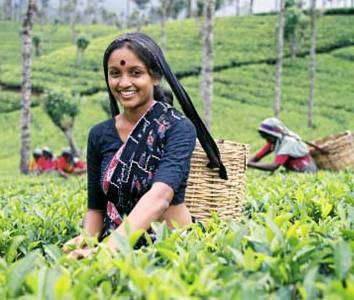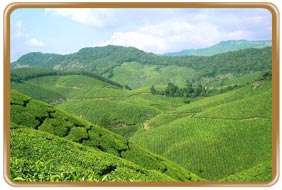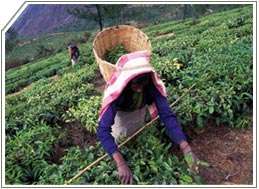
Download Free Apps & Games @ PHONEKY.com

Download Free Apps & Games @ PHONEKY.com
Subject: OOTY- the QUEEN of HILL statio
Replies: 8 Views: 3867
shineboy 30.04.10 - 04:14am *
*
shineboy 30.04.10 - 04:20am
Ooty History, Tamil Nadu! Ooty or Udagamandalam (the Tamil version of the original name) rightly described as Queen of Hill Stations by Pandit Jawaharlal Nehru, now sprawls over an area of 36 sq km with a number of tall buildings cluttering its hill slopes. It is situated at an altitude of 2 , 240 meters above sea level. Ooty still woos people from all over India as well as foreign countries right through summer, and sometimes in the winter months too. An added attraction for the tourists to Udagamandalam is the mountain train journey on a ratchet and pinion track which commences from Kallar, near Mettupalayam and wends its way through many hair-raising curves and fearful tunnels and chugs along beside deep ravines full of verdant vegetation, gurgling streams and tea gardens. The scenery, as it unfolds during the trip, is breathtaking, awe- inspiring and fantastic. One can notice a marvellous change in vegetation, as one goes from Kallar to oor. At Kallar it is tropical and at Burliar-the next bus-stop as one proceeds from Mettupalayam-it is sub-tropical. Near oor, it is humid with pines, blue gum (Eucalyptus globulus) and cypress trees. As we go from Ooty to Gudalur, the change in vegetation is striking. What a splendid interaction between climate and vegetation ! It is therefore very appropriate that Mount Stuart called the whole road leading to Ooty from Mettupalayam, One long botanical debauch. This beautiful botanical paradise was first brought to the public eye by John Sullivan, Collector of Coimbatore district in 1819. But prior to this in 1812 , the first Englishmen who were sent up the Nilgris by the Collector of Coimbatore, were Mr. Keys, Assistant Revenue Surveyor, and his Assistant, McMahon. They made their way via Dananayakan Kottai to Aracad and the existing village of Denad, and penetrated as far as Kallatti, the lower level of North Ooty, but never set their eyes on the beautiful valley in which Ooty lay. After Keys' visit there was no further expedition until 1818 when J.C. Whish and N.W.Kindersly (Asst. and second Asst. to the Collector of Coimbatore respectively) went up by the Dananayakan Kottai- Denad route, crossed the plateau in a south-western direction and descended by the Sundapatti pass from Manjakombai to the Bhavani valley and then went back to Coimbatore. The purpose of their visit is not known. In March 1819 , John Sullivan obtained Rs 1 ,100 ( Rupees of those days not to be compared with the present-day rupee) from the Board of Revenue for laying a bridle path up the hill from Sirumugai to Kotagiri and its neighboring village, Dhimatti. The work was executed by McPherson in a period of 2 years starting 1821. This was the only route to the Nilgris from Coimbatore until 1832 , when the first oor ghat road was laid, thanks to the then Governor, S.R. Lushington, who got the work executed by Lehardy and Capt. Murray. The present metalled ghat road from Kallar to oor, a distance of 25 km which has 14 hair-pin bends and a gradient of one 18 ft, which facilitated carriage traffic from Madras to Ooty, was mainly constructed by Colonel G.V. Law in 1871. It is gratifying to note that the cascade of the oor river near Wenlock bridge on the oor-Mettupalayam road named after Law, continues to bear the same name. The oor-Mettupalayam road was extended to Udagamandalam, covering a distance of about 15 km. The Kotagiri-Mettupalayam road (about 34 km long) which was 8 ft wide to begin with, was widened to 17 ft in 1872-75 with a gradient of one in 17 by the Dist. Engineer, Major Morant R.E. and handed over to the District Board in 1881. During the period from 1819 to 1830 , John Sullivan's contribution was, apart from laying the route to Ooty, that he built the first house called Stone House in this place. This formed the nucleus of Government offices. Further, at his own expense, he conducted experiments on agricultural and horticultural crops and in animal husbandry to find the most suitable crops and breeds of milch animals for future settlers. Next to the magnificent task of laying the road to Ooty, the British took up, around 1880 , the stupendous task of connecting Mettupalayam to Ooty by rail. A Swiss engineer, M. Riggenback and Major Morant of Kotagiri road fame prepared an estimate of 1 ,32 , 000 pounds (currency) for laying the rack railway and floated a company called The Rigi Railway & Co Ltd. Since capital was not forthcoming, Mr. Richard Wolley of oor came forward to advance money on the condition that the contract would be entrusted to Mr. Wolley by the Government of Madras. The agreement between the 2 was signed in 1886 , and the company called The Nilgri Railway & Company came into being with a capital of Rs 25 lakh. The work on the line was started in August 1891 by Lord Wenlock, Governor or Madras, but the company was liquidated in 1894. Later, a new company was formed in 1894 , and the work was completed in 1899. The line was worked by Madras Railway, to start with. Though the Nilgris formed part of Coimbatore district, it was separated into an independent district in 1868. For a period of 13 years from 1830 , it remained part of Malabar district. This was to prevent tobacco smuggling from Coimbatore. From John Sullivan's days to this date, more than 170 years have rolled by. Udagamandalam considered a sanatorium and hill resort by the Europeans, has come to be like any other district. The devastation was so much that a ban on fresh construction was belatedly imposed by the Government. *
shineboy 30.04.10 - 04:52am -TEA-LEAVES-PLUCKING-LADY-OOTY- *
-TEA-LEAVES-PLUCKING-LADY-OOTY- *
shineboy 30.04.10 - 05:00am
About Ooty, Tamil Nadu! The Verdant hills, the lush green valleys and the pristine natural beauty of the hill resort of Ooty offers the urban tired souls a chance to resume their affair with Nature, to whom they truly belong. The heavenly hill resort like a blushing bride peeks from behind lofty Nilgiri hills. The unassuming beauty of this heavenly hill resort beckons you to come and and embrace the tranquility and solace that Ooty has to offer. The Hill resort of Ooty in Tamil Nadu, India, is located in the midst of four high hills; Doddabetta, Snowdon, Elk hill and Club Hill. These hills belong to the Nilgiri range or the 'blue mountains.' A British Collector by the name of John Sullivan discovered the hill station of Ooty and developed it as a summer resort, realizing its potential. The original name of Ooty was 'Udhagamandalam, but it was shortened to 'Ooty' after the arrival of British, which might have had something to do with the difficulty one feels at pro nouncing such a difficult name! Apparently the British Collector was right about Ooty and now it is one of the most popular hill stations in India, particularly of South India. History in Brief The earliest that is known of the history of Ooty, is that it was ruled by Vishnu Vardhana, the Hoysala King, from 1104 to 1141 AD. Later, after many years, it came under the rule of the British East India Company, after the company signed a treaty with the brave Tipu Sultan in 1799. This is when John Sullivan started the development of the hill station and promoted it as an ideal summer retreat. Lots of cottages, clubs and other buildings were built to house and provide recreational facilities to the British officials. Soon enough, the hill station was growing tea for its inhabitants, who considered high tea to be an integral part of their day. Now, these tea estates not only produce the favorite drink of millions of Indians but also add to the charm and the beauty of the hill resort of Ooty India. Climate and the best time to visit Ooty is a picturesque hill station that is pleasant all through the year, so there is no 'wrong time' to visit this place. Though many consider that the best time is from 'February to May' or else from ' September to November'. If you prefer summers, you can simply pack all your cotton clothing, along with a light jacket, just in case there is a shower or drizzle. The winters are somewhat cold, so it would be a good idea to carry your winter wear or woolen clothing with you on tours to Ooty India. Inhabitants of Ooty The Nilgris range which is the junction of the Eastern and Western Ghats, was christened Neelagiri by its inhabitants 850 years ago, because of the blue haze of the clouds enveloping its slopes. Originally, it was inhabited by Todas, Irulas, Kurumbas, Panias and Badagas. Of these, the Todas, who are vegetarians, tall and fair, have dwindled in number. The Badagas, who speak a mixture of Kannada and Tamil, are said to have migrated from Mysore 400 years ago. The Panias and Irulas are confined to Mudumalai sanctuary. Though the Badagas were essentially agriculturists, they are socially, educationally and even economically advanced now. Even the Todas have taken to Government service. The present population of Ooty is 78 ,277 and comprises of Todas, Badagas, Tamils, Keralites and Mysoreans. The Tea he establishment of numerous tea estates made Ooty famous. Lofty mountains, dense forest, sprawling grasslands and miles and miles of tea gardens greet the passengers on most routes. The annual Tea and Tourism Festival attracts crowds in huge numbers. Visit Ooty during this festival, when tea lovers from all over the world converge. An occasion not to be missed! *
shineboy 30.04.10 - 05:04am *
*
shineboy 30.04.10 - 05:14am
Ooty Fast Facts...... Area 30.67 sq km .......Population 93 ,921........ Altitude 2286 m above sea level ........Season April to June and September to November.....Languages Spoken Tamil, English ......Annual Mean Rainfall 991 mm .....Maximum Temperature 24.3 C..... Minimum Temperature 4.8 C .....Clothing.... Heavy Woolen in winter ..Light Woolen in summer ...,...Time 5.30 GMT .......Best Time To Visit The climate of Ooty is pleasant throughout the year., .....The best time to visit is between February to May and September to November. *
shineboy 30.04.10 - 05:34am *
*
shineboy 30.04.10 - 06:00am
The Nilgiris District is basically a Horticulture District [ 3 ] and the entire economy of the district depends upon the success and failure of Horticulture Crops like Potato , Cabbage , Carrot , Tea , Coffee , Spices and Fruits . The main cultivation is plantation Crops, viz., Tea and Coffee. Tea is grown at elevations of 1 ,000 to above 2 ,500 metres. The area also produces Eucalyptus oil and temperate zone vegetables. Potato and other vegetables are raised in Udhagai and oor Taluks. Paddy and Ginger are grown in Gudalur and Pandalur Taluks. Paddy is also grown in Thengumarahada area in Kotagiri Taluk. Besides these crops, Ragi, Samai, Wheat, Vegetables etc., are also grown in small extent throughout the district. There are no irrigation schemes in this district. The crops are mainly rain fed. Check Dams have been constructed wherever it is possible to exploit natural springs. Ecoregions *
akbar9 1.05.10 - 04:24pm
nice tea farm shiney *